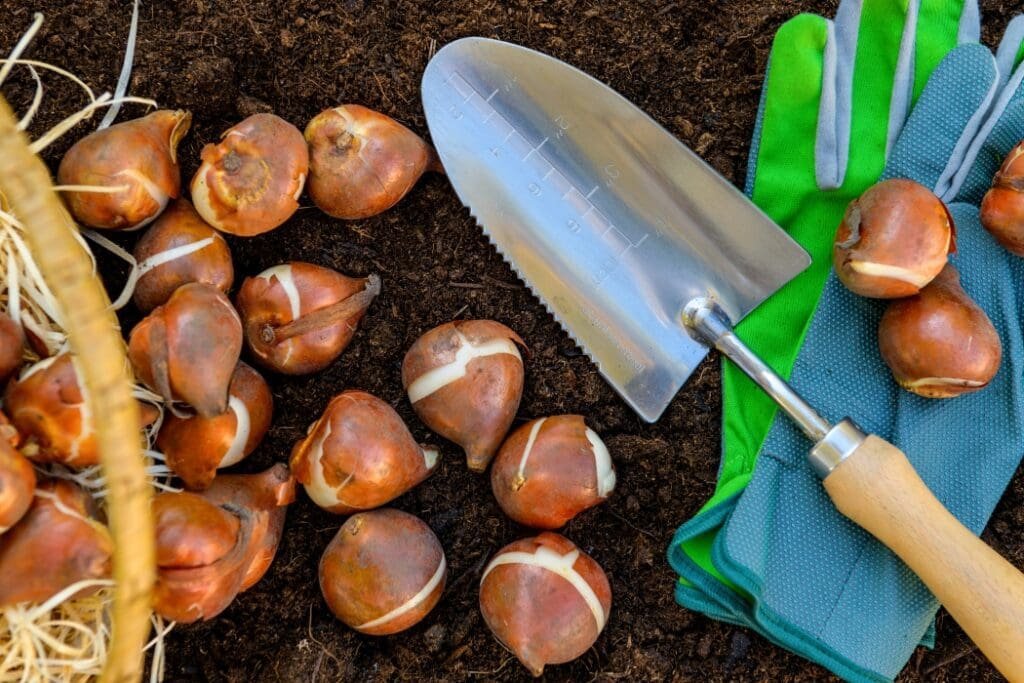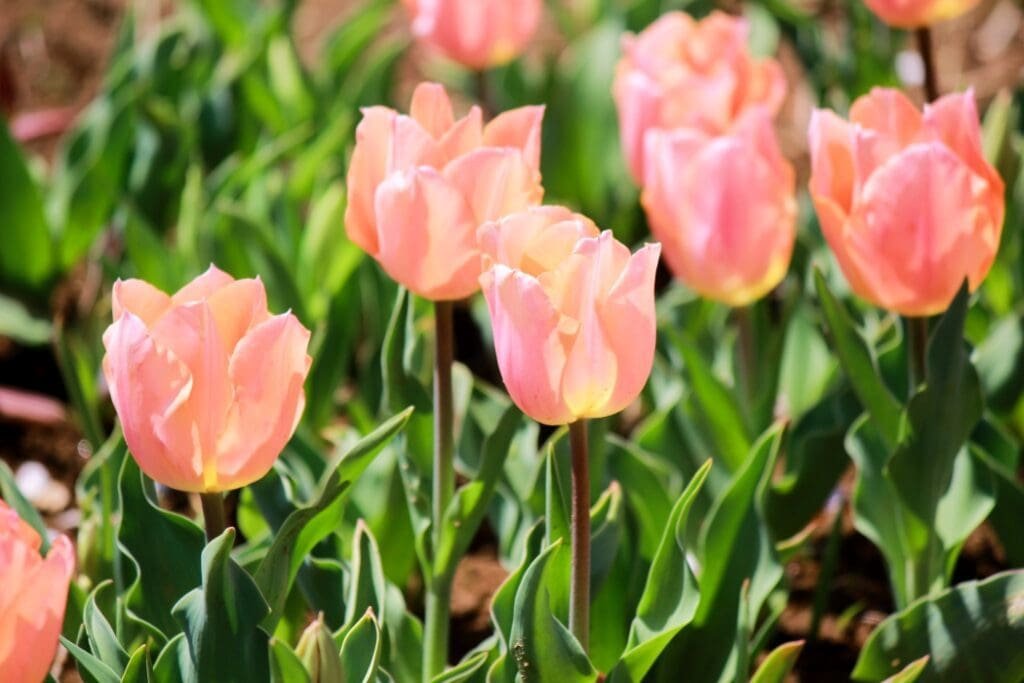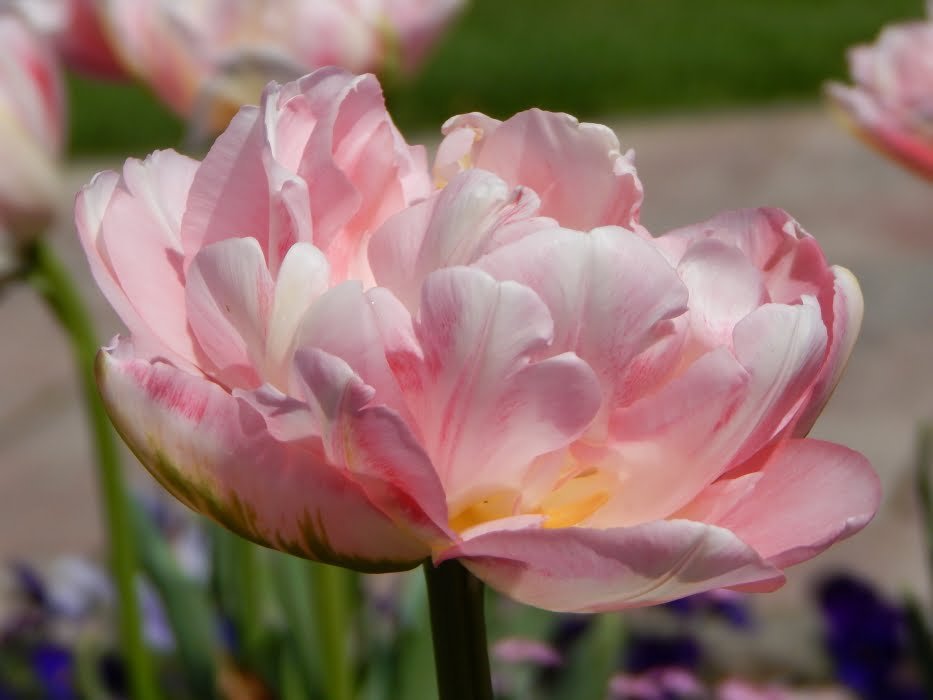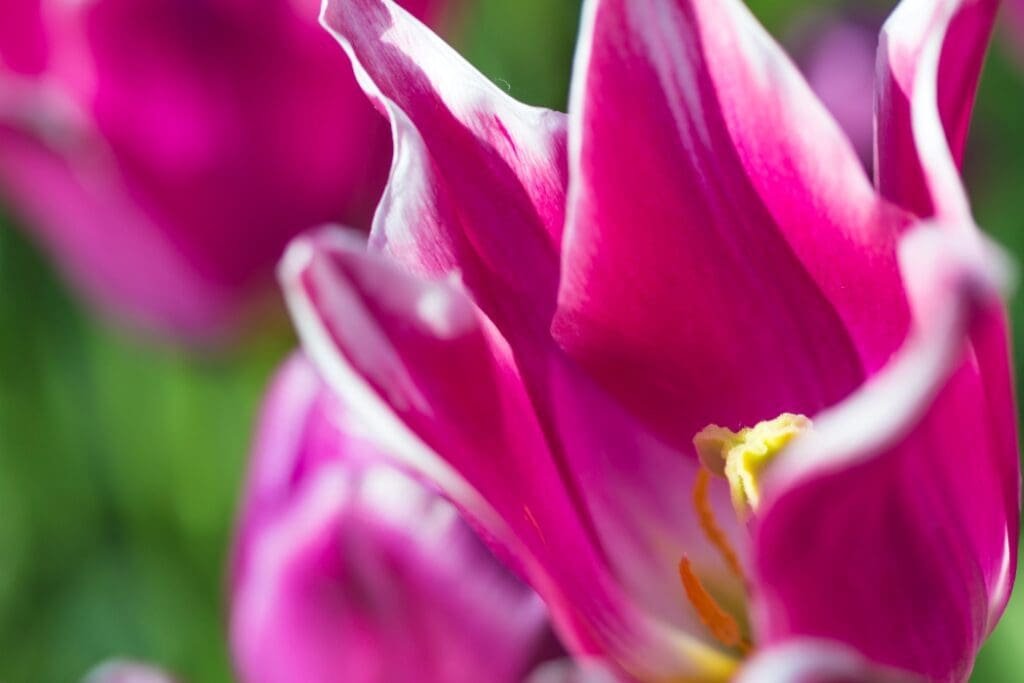The best time to plant tulip bulbs in the UK is in autumn, November in particular is recommended as the ideal month to plant tulips.
“How to grow tulips” is a question many gardeners ask as they look forward to the arrival of spring.
Although tulips are perennials, they are often grown as annuals since they tend not to bloom again in the following years. To guarantee a consistent display of colour each spring, it’s advised to plant new tulip bulbs every year.
You might also be interested in: Spring Flowering Bulbs
Affiliate Disclaimer: As an Amazon Associate, I earn from qualifying purchases.
How to Plant Tulips

Planting tulips can be straightforward, but keep these tips in mind:
- Position: Choose a sunny spot with well-draining soil.
- Group Planting: For a stunning display, plant tulips in large groups.
- Pots and Containers: They also do well in pots, as long as there’s good drainage and they’re not left to dry out.
- Planting Depth: Plant bulbs three times their depth to encourage blooming.
- Bulb Orientation: Ensure the pointy end of the bulb faces upwards.
- Spacing: Space each bulb at least 6cm apart.
- Post-Flowering Care: After blooming, leave the foliage until it yellows. This helps nutrients return to the bulb, potentially leading to blooms next year.
Top Tip: If you are planning on planting lots of tulips or any other bulbs we would recommend using a long handled bulb planter such as this one by Kent & Stowe available on amazon.
Reasons to Plant Tulips?
Tulips are great for both garden borders and containers, bringing early spring colour. They bloom in April and May, offering a wide variety of colours and shapes. These flowers are fairly easy to care for. Just give them plenty of sunlight and make sure the soil drains well. Tulips also make beautiful cut flowers, brightening up any bouquet with their vibrant colours.
Growing Tulips in Pots and Containers

Planting tulips in pots and containers can be quite a show. You can layer them with other spring bulbs, creating a ‘bulb lasagne.’ This technique extends the blooming period and adds more colour to your container.
Ensure your pot is deep, has good drainage, and is placed in a sunny area. A mix of peat-free multipurpose compost and horticultural grit is ideal to avoid waterlogging and bulb rot.
Also, consider the final height of the tulip variety you’re planting. Choosing the right pot size helps your tulips look balanced and stunning when they bloom.
Top Tulip Picks for Your Garden
Here’s a list of our top tulip picks. Each offers unique beauty, ensuring your garden bursts with colour and vibrancy every spring.
1. Tulipa ‘Queen of Night’

The ‘Queen of Night’ tulip, often referred to as the ‘black tulip,’ features deep, velvety maroon blooms that appear almost black. This dramatic variety brings depth and contrast to spring borders. Pair it with lighter-coloured flowers for a stunning, eye-catching display.
Check price and availability on Amazon
2. Tulipa ‘Apricot Beauty’

The Apricot Beauty is a Single Early tulip variety, renowned for its soft, salmon-pink flowers. Its delicate colour and classic shape bring sophistication and charm to your spring garden, enhancing its beauty with a gentle, elegant touch.
Check price and availability on Amazon
3. Tulipa ‘Angelique’

The Angelique tulip is a peony-flowered variety, known for its soft, pale pink double blooms. Its delicate and romantic appearance makes it a perfect addition to cottage gardens. These tulips also look gorgeous as cut flowers in a vase, adding a touch of elegance to any setting.
4. Tulipa ‘Ballade’

The Tulipa ‘Ballade’ is an elegant lily-flowered tulip, characterized by its pointed petals in a deep magenta colour with eye-catching white edges. It adds height and a vibrant splash of colour to garden borders, making it an ideal choice for both traditional and contemporary garden styles.
Each of these tulip varieties offers something special and unique, so why not mix and match? With these top picks, your garden will be an explosion of colour, texture, and form, delighting the senses and heralding the arrival of spring in style!
FAQs – How to Grow Tulips
Q: Can I leave tulip bulbs in pots after flowering?
Yes, you can leave tulip bulbs in pots after they have flowered, but it’s essential to care for them properly. After the tulips have bloomed, don’t cut back the foliage immediately. Let the leaves yellow and wither as they continue to photosynthesise, supplying the bulbs with energy for next year’s blooms. Make sure the soil is well-drained to avoid water logging, which could cause the bulbs to rot.
Q: Do tulips multiply?
Yes, tulips can multiply through a process called ‘naturalising’. When given ideal conditions, tulips produce small bulbs or ‘offsets’ around the base of the main bulb. If left undisturbed, these offsets can grow and bloom into new plants in the following years. However, not all tulip varieties are good at naturalising.
Q: Do tulips grow back every year in the UK
Tulips are technically perennials, meaning they should return every year. However, many varieties, particularly the more hybridised types, are often treated as annuals in the UK. This is because these varieties don’t reliably re-bloom year after year. For a recurring spring display, gardeners usually plant new bulbs each autumn. If you want tulips that return each year, opt for species or ‘botanical’ tulips, which are known for their ability to naturalise.
Q: Do you deadhead tulips?
Yes, it’s a good practice to deadhead tulips once the blooms fade. This process involves removing the spent flower heads, which stops the plant from investing energy into seed production. Instead, the tulip can direct its energy back to the bulb, enhancing the chances of re-flowering in the following year. Remember, though, to leave the foliage until it has yellowed and withered before you remove it.






